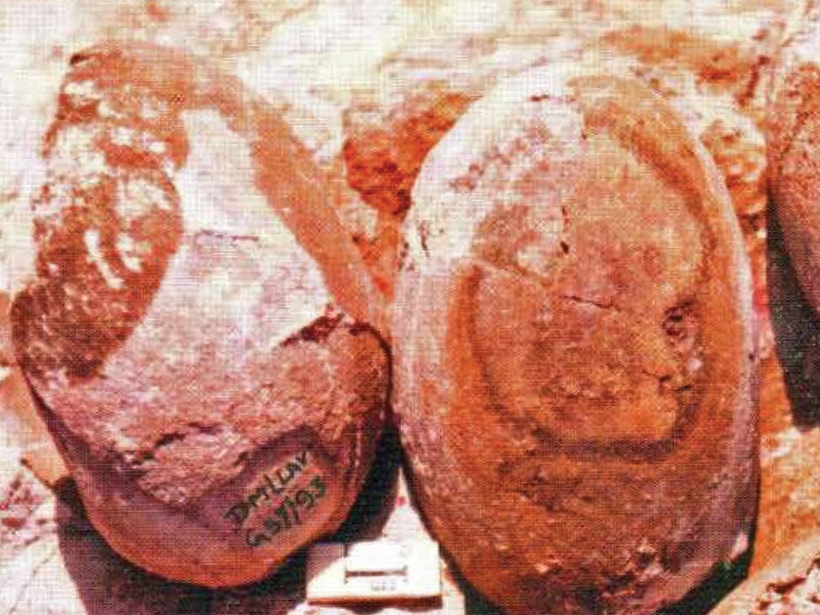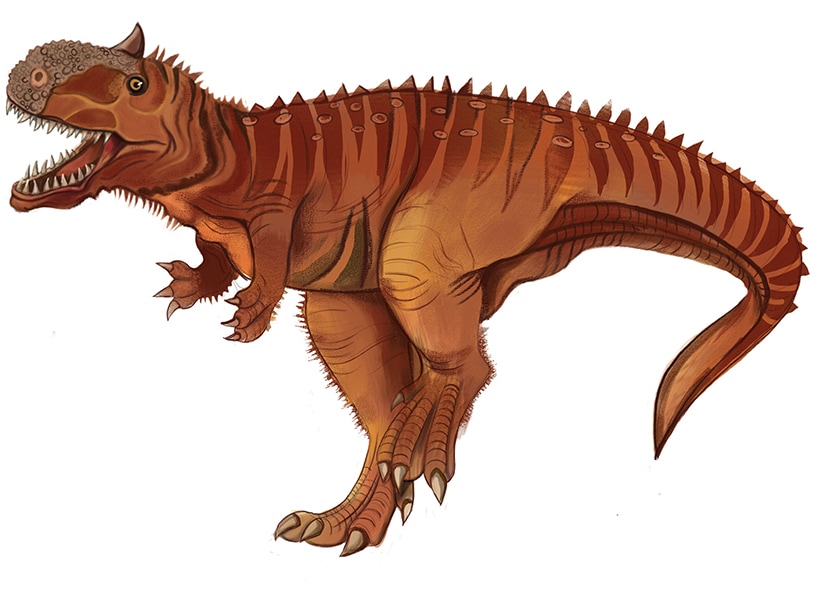Would you like to see and hold dinosaur fossils? Well, if you’re anywhere in India, they’re perhaps not too far from where you are!
By Vaishali Shroff
The Wonderful Narmada: Our Fossil-Rich Heritage
Call her Narmada. Call her Nerbudda. Call her Rewa. Or call her Namade, as did the Greek geographer Ptolemy in his scripts from second century AD. This ancient, historic and holy river that flows across the breadth of India is the fifth-largest river in India and the largest river in the state of Madhya Pradesh (MP). Originating from the Narmada Kund, a small reservoir in the mighty Amarkantak Hills of MP, it flows through the Vindhya and Satpura mountain ranges. It is over 1,300 km long and travels through the states of MP, Gujarat and Maharashtra.


What is the Lameta Formation?
It is the most fossil-rich region of India. The Lameta Formation is a multilayered sedimentary belt that runs along the banks of the Narmada. It was formed in the Upper Cretaceous Period (100.5 mya to 66 mya). The fossils are found buried in marble and dolomitic cliffs, which are covered with sedimentary rocks for a stretch of nearly 200 km. These sedimentary deposits have helped preserve the fossils for millions of years.
Fossils of popular dinosaurs from India, such as the Titanosaurus, Indosaurus, Laevisuchus, Isisaurus and Jainosaurus, have been unearthed here!
Other Fossil-Rich Regions
Have you heard of the Maleri, Dharmaram and Kota Formations?
These formations, too, are fossil-rich sedimentary belts. They are found in Andhra Pradesh, along the banks of the rivers Pranhita and Godavari. They are home to the dinosaur fossils from the Late Triassic Period (251 mya to 200 mya) and Early Jurassic Period (200 mya to 146 mya), such as Alwalkeria maleriensis and Barapasaurus tagorei.
A significant number of fossilized bones of sauropods have also been discovered in the sedimentary formation called Mahadek Formation at Dirang, a small village near Ranikor, West Khasi Hills district, Meghalaya. Similarly, some areas of Kutch and Rajasthan, too, are considered fossil sites with high potential for discoveries.
Fossil Sites and Hatcheries in India
Would you like to see and hold dinosaur fossils? Well, if you’re anywhere in India, they’re perhaps not too far from where you are!
I get wide-eyed, astonished looks from most people when I tell them that India has some of the world’s largest fossil excavation sites and hatcheries! Of late, thanks to social media, people are becoming more and more aware about them. Still, most people are in the dark about where these sites are and what they contain.
Rahioli in Gujarat is the third-largest fossil excavation site and the second-largest hatchery in the world. (The other major nesting sites are in Aix-en-Provence in France and in Mongolia.) Located 70 km from Ahmedabad, Rahioli is home to the dinosaurs from the Cretaceous Period.
Another fossil excavation site is in Telangana, near Kota village. Dinosaur fossils from the Jurassic Period were discovered here.


What are Nesting Sites or Hatcheries?
Dinosaur nesting sites are places where dinosaurs made pits in the ground and laid eggs. However, these pits got buried under sand and rocks when a series of natural calamities—volcanic eruptions, earthquakes, tsunamis—took place in different parts of the world.
The buried eggs were fossilized and are now being discovered during excavations. It is important to remember that finding fossilized eggs is an incredibly rare thing. Padma was a lucky girl!
Hold your breath! The largest Cretaceous site in the world is in central India and it extends from Kutch in the west to Nagpur in the east, then up to north of Hyderabad (Adilabad) and further down to Tamil Nadu. In all, it covers a whopping 10,000 sq. km! Phew!
Whose egg is this?
You can tell which dinosaur the egg fossil belongs to by looking at its shape.
Megaloolithus eggs: As the name suggests, these are ‘large eggs’, about 16 cm in diameter. They typically belong to sauropods.
Elongatoolithus eggs: These are elongated eggs and typically belong to theropods.
Ornithischian eggs: These are very tiny and belong to small dinosaurs.
Fun with Nomenclature
Did you ever wonder why most dinosaur names end with a ‘saurus’ or why they have such absurd names?
To start with, two Greek words, deinos (meaning terrible) and sauros (meaning lizard) were used to create the word Dinosaur!
But how do they get such strange-sounding, tongue-twisting names?
Typically, dinosaur names are indicative of their distinct physical features, their place of discovery, the name of the Palaeontologist who discovered them or the scientist who first described them in a research paper! They are a combination of two Greek or two Latin words, or one Greek and one Latin word, in the following order:
Genus + species
Did you know? Every dinosaur name must be approved by the International Commission on Zoological Nomenclature.
Also, most popular dinosaur names end in ‘saurus’ or ‘suchus’ or ‘raptor’. While sauros means ‘lizard’ in Greek, suchus means ‘crocodile’ (derived from the word ‘soukhos’, an Egyptian crocodile god) and raptor means a ‘bird of prey’ in Latin.
Don’t forget to italicize the genus and species names. It’s a rule!
Among the dinosaurs found in India, Alwalkeria maleriensis was named after the British Palaeontologist Alick Walker. His name forms the genus name of the dinosaur, while its species name comes from the Maleri Formation in Andhra Pradesh, where it was discovered. Bruhathkayosaurus means a huge-bodied lizard (‘bruhath’ means ‘huge’ and ‘kaya’ means ‘body’ in Sanskrit).
If you were a Palaeontologist, and you discovered a new dinosaur fossil, what would you name it?


Rajasaurus narmadensis
The 65 million year old Rajasaurus narmadensis, an abelisaurid theropod, was discovered by Palaeontologist Suresh Srivastava from Jaipur GSI in 1983, from the fossil graveyard at Rahioli, in the Kheda district of Gujarat. This region is close to the state highway and is called the Temple Hill.
The Rajasaurus sports a peculiar crest on its head, much like a crown. Hence the name Rajasaurus, which means ‘Royal Lizard’. The word narmadensis stands for the sediment-rich Narmada river belt where it was discovered. A bipedal carnivore, it is about 9 m long with a very robust built, and a strong skull and neck.
The most fascinating part of the discovery was that he found a completely intact braincase just 3.5 m away from the backbones. He meticulously cleaned them. Near Rajasaurus’s fossil bones, he discovered the fossil bones of individual sauropods, which meant that the Rajasaurus preyed on mighty sauropods like Mahaan and Baahu.
(Excerpted with permission from the book The Adventures of Padma and a Blue Dinosaur by Vaishali Shroff, illustrated by Suvidha Mistry, published by HarperCollins Children’s Books; MRP: Rs 399.)
Source: Read Full Article





